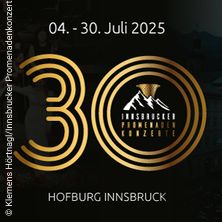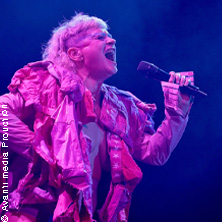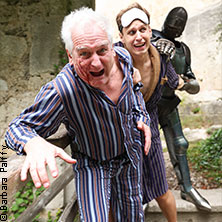Kerry King
Slayer’s final gig was on November 30, 2019, in the band’s Los Angeles hometown. But the night marked a new beginning for iconic Slayer songwriter/guitarist Kerry King. The band co-founder wasn’t nearly finished; he had much more brutal and provocative music brewing, stages to dominate, heads to roll. King’s sound and vision manifest in the 13 songs on From Hell I Rise, the first solo outing in King’s four decades of slaying the metal universe. His particular brand of blunt power, incisive lyrical themes, and aural assault are finally unleashed on May 17, 2024.
The arrival of one of the most anticipated albums of 2024–and one of the most eagerly awaited metal records ever—finds King beyond stoked. “It’s the best feeling I’ve ever had. There will be some faces punched in,” he says. The guitarist quickly addresses the most-asked question: “I think people are going to compare it to Slayer. I’m not afraid of that because I think it stands up to anything we’ve done in our history, musically, performance-wise.” That said, “There will be people complaining, ‘Why does it sound like Slayer?’ And ‘why doesn’t it sound more like Slayer? That’s just what people do.”
Joining the King crusade is a lineup that began with Slayer drummer Paul Bostaph. “Paul’s kind of like my [Vinny] Appice to Ronnie James Dio,” King says. “I knew Paul wanted to be part of this since 2018. My initial plan was to bring [Gary] Holt, but then I thought I probably shouldn’t have any more Slayer pieces, so that went Phil Demmel’s way.” The band is completed by bassist Kyle Sanders (Hellyeah), and in the much-talked-about vocalist spot, Mark Osegueda (Death Angel), a friend of King’s since the early ‘80s Cali thrash days. The lineup kills. From the instrumental entrée “Diablo” into the relentless, repentless “Where I Reign,” to the last cut, the statement-making, full-circle title track From Hell I Rise, King and co. are in full control. Music and lyrics are very intentional, with song topics including war, women’s rights, current American politics…and one-tune inspired by The Scorpions and Halloween-style riffs. (“That one, ‘Shrapnel,’ was something super-indulgent for me, and it came out really cool,” he says.)
King was creatively satisfied in Slayer, had no itch to go solo, nor was he dying to try genre-switching BS. But he very much felt the band he helped found called it quits way too soon, which is why From Hell I Rise sounds like it does, proudly not unlike Slayer. “I was writing most of the music anyway, especially at the end. Things I wrote during Slayer’s lifespan are showing up on From Hell I Rise, which you’ll see later, on the next record.”
King initially worked up From Hell I Rise during the Repentless writing era. “When I was working on ‘Where I Reign,’ it was funny because I was like, ‘From hell I will rise!’ But then I thought, ‘Well, I can’t use that; I’ve already got ‘From Hell I Rise.’ Then I figured, ‘What if one’s the intro, then you’re foretelling the future, which is the end song of the album?’ I liked that idea. I’ve never done anything like that before,” says King. “So that’s how that is. The first one goes “From Hell I Will Rise,” and the last one says “From Hell I Rise.” It’s actually happening. I love that in my twisted mind.”
“Lyrically, I did ‘Residue’ and ‘Toxic’ when I had COVID, and I was stuck in my hotel room,” King explains. “It was when Roe v. Wade got shot down. I was just really pissed off. And ‘Residue’ talks about ‘mental retrograde,’ the silly things in politics in the last eight years, and all the nonsense going on in America. We used to be a lot more united than we are now.”
King’s also not averse to putting a few not-so-hidden Slayer Easter eggs on From Hell I Rise: “Lyrics dabble in my past because you got rain/reign. People will always put rain with me,” King says. South of Heaven imagery—devilish, that is—may also be present. The song “Idle Hands” premiered via Rolling Stone, who raved about the “explosive, skull-rattling riff… Singer Mark Osegueda (Death Angel) narrates the return of King — “So begins my revolution/Violence spreads my retribution … ‘Till the end, idle hands do the Devil’s work.”
Osegueda is the first new vocalist King’s been in a band with for 40 years, and his voice is well-known and revered. “I think a lot of people — namely industry types — were worried about him sounding too much like Death Angel,” King says. Those concerns proved moot. “I knew what we had; he and I worked really well together.”
Yet Osegueda’s singing was so powerful and unique that King was momentarily uneasy: “By the second song Mark finished singing, I went into the studio and asked him, ‘Is this sustainable? Because I’ve never heard you sing like this. I want to make sure you’re not blowing your load in the studio and can’t reproduce this live.’ Mark said, ‘I can totally do it.’ So I asked him again in about an hour. And again, in another hour. Then I figured, ‘alright, I guess he means it.’”
Producer Josh Wilbur (Korn, Lamb of God, Avenged Sevenfold, Bad Religion), who tracked From Hell I Rise at Hollywood’s famous Henson Studios in a little over two weeks, concurs. “Mark sounds like a fucking demon.” As for his first time working with King? The producer found the guitarist assertive and driven but easy to work with. “Kerry never comes off as a jerk or mean guy. But he knows exactly what he wants,” Wilbur says. “He’s very direct, but it comes from a place of confidence, not from a place of ego or anything else.”
Though the pandemic halted King’s plans to write and release an album quickly, the process was relatively streamlined, even though King moved with his wife from SoCal to Las Vegas to New York during that time. But Ron Sandoval at Rev it Up Studios–who has “been there since day one” –had a lockout rehearsal space ready for whenever King and Bostaph wanted to work together. King traveled frequently to LA and rehearsed and worked up songs with Bostaph. The frequent but spaced-out studio time allowed the songs to breathe and progress. ProTools was always running, so every idea and rehearsal was captured, allowing the duo to maintain momentum.
King authored all the lyrics, mainly for logistical reasons: “I finished everything before Mark knew he had the gig. But that’s not to say he will or won’t write on record two,” says King. Circumstances dictated that King sing on all From Hell I Rise demos. “I did scratch vocals on everything,” King says, adding, “I’m not a singer. I’m a guitar player. I’ve got conviction when I sing, but I have no range, and I need some distortion to help me out a little bit. There was always, ‘I got this if whatever we’re looking for doesn’t work.’ Luckily, we didn’t have to go that route.”
Oseguda was the only vocalist who tried out. “I would send him lyrics along the way, just to bounce them off my friend.” Then it escalated. “I said, ‘Why don’t you come in here, listen to my demos, and put ‘Mark vocals’ on them?’” King said. “Whenever he was in between tours, I’d say, ‘Hey, you want to come make these better? You wanna try these new ones?’ And we recorded. Paul did his stuff. Phil tracked all his leads; Kyle did all the bass. So, everybody knew how everything went, where the vocals and leads were, all before recording the album. That’s the first time in my life I’ve known that and done that.”
The fully realized process was a revelation for King. “It’s wonderful knowing where everything goes. I hear it all in my head, but I think the one who benefits the most is Paul, because he could actually hear the vocals. I think it’s probably the most luxurious time Paul has had with me, just knowing, not guessing, ‘Is this roll going to work?’”
So far, everything is working: Festival dates are booked; shows are set through Fall 2024, with more being confirmed daily. King and company are ready to deliver. For an hour-long set list, the guitarist imagines a mix of From Hell I Rise material and Slayer songs. “I’ve always planned on doing Slayer stuff, concentrating on the songs I did or had a part in doing,” he says. “I think in the beginning, we’ll be playing three, four or five Slayer songs.”
King’s got, freedom, boundless creativity and the band to make it happen. Rightfully proud of his Slayer history, King’s unafraid to both mine it and to simultaneously move forward. For instance, in the ultra-punk ‘80s-vibe song “Two Fists,” lyrics include, “this fuckin’ ship’s about to sink / I think I need another drink.” “It’s not a stretch for me for people to see that I wrote that,” concludes King. “But it’s got punky type phrasing that might not be present in a Slayer song, and I never would have written ‘I think I need another drink,’ in a Slayer song, even though it has every right to be there.” Kerry F’n King, circa 2024, still mincing no words: “From Hell / Through fire I will rise / Until blood rains from the skies.” Slayer’s final gig was on November 30, 2019, in the band’s Los Angeles hometown. But the night marked a new beginning for iconic Slayer songwriter/guitarist Kerry King. The band co-founder wasn’t nearly finished; he had much more brutal and provocative music brewing, stages to dominate, heads to roll. King’s sound and vision manifest in the 13 songs on From Hell I Rise, the first solo outing in King’s four decades of slaying the metal universe. His particular brand of blunt power, incisive lyrical themes, and aural assault are finally unleashed on May 17, 2024.
The arrival of one of the most anticipated albums of 2024–and one of the most eagerly awaited metal records ever—finds King beyond stoked. “It’s the best feeling I’ve ever had. There will be some faces punched in,” he says. The guitarist quickly addresses the most-asked question: “I think people are going to compare it to Slayer. I’m not afraid of that because I think it stands up to anything we’ve done in our history, musically, performance-wise.” That said, “There will be people complaining, ‘Why does it sound like Slayer?’ And ‘why doesn’t it sound more like Slayer? That’s just what people do.”
Joining the King crusade is a lineup that began with Slayer drummer Paul Bostaph. “Paul’s kind of like my [Vinny] Appice to Ronnie James Dio,” King says. “I knew Paul wanted to be part of this since 2018. My initial plan was to bring [Gary] Holt, but then I thought I probably shouldn’t have any more Slayer pieces, so that went Phil Demmel’s way.” The band is completed by bassist Kyle Sanders (Hellyeah), and in the much-talked-about vocalist spot, Mark Osegueda (Death Angel), a friend of King’s since the early ‘80s Cali thrash days. The lineup kills. From the instrumental entrée “Diablo” into the relentless, repentless “Where I Reign,” to the last cut, the statement-making, full-circle title track From Hell I Rise, King and co. are in full control. Music and lyrics are very intentional, with song topics including war, women’s rights, current American politics…and one-tune inspired by The Scorpions and Halloween-style riffs. (“That one, ‘Shrapnel,’ was something super-indulgent for me, and it came out really cool,” he says.)
King was creatively satisfied in Slayer, had no itch to go solo, nor was he dying to try genre-switching BS. But he very much felt the band he helped found called it quits way too soon, which is why From Hell I Rise sounds like it does, proudly not unlike Slayer. “I was writing most of the music anyway, especially at the end. Things I wrote during Slayer’s lifespan are showing up on From Hell I Rise, which you’ll see later, on the next record.”
King initially worked up From Hell I Rise during the Repentless writing era. “When I was working on ‘Where I Reign,’ it was funny because I was like, ‘From hell I will rise!’ But then I thought, ‘Well, I can’t use that; I’ve already got ‘From Hell I Rise.’ Then I figured, ‘What if one’s the intro, then you’re foretelling the future, which is the end song of the album?’ I liked that idea. I’ve never done anything like that before,” says King. “So that’s how that is. The first one goes “From Hell I Will Rise,” and the last one says “From Hell I Rise.” It’s actually happening. I love that in my twisted mind.”
“Lyrically, I did ‘Residue’ and ‘Toxic’ when I had COVID, and I was stuck in my hotel room,” King explains. “It was when Roe v. Wade got shot down. I was just really pissed off. And ‘Residue’ talks about ‘mental retrograde,’ the silly things in politics in the last eight years, and all the nonsense going on in America. We used to be a lot more united than we are now.”
King’s also not averse to putting a few not-so-hidden Slayer Easter eggs on From Hell I Rise: “Lyrics dabble in my past because you got rain/reign. People will always put rain with me,” King says. South of Heaven imagery—devilish, that is—may also be present. The song “Idle Hands” premiered via Rolling Stone, who raved about the “explosive, skull-rattling riff… Singer Mark Osegueda (Death Angel) narrates the return of King — “So begins my revolution/Violence spreads my retribution … ‘Till the end, idle hands do the Devil’s work.”
Osegueda is the first new vocalist King’s been in a band with for 40 years, and his voice is well-known and revered. “I think a lot of people — namely industry types — were worried about him sounding too much like Death Angel,” King says. Those concerns proved moot. “I knew what we had; he and I worked really well together.”
Yet Osegueda’s singing was so powerful and unique that King was momentarily uneasy: “By the second song Mark finished singing, I went into the studio and asked him, ‘Is this sustainable? Because I’ve never heard you sing like this. I want to make sure you’re not blowing your load in the studio and can’t reproduce this live.’ Mark said, ‘I can totally do it.’ So I asked him again in about an hour. And again, in another hour. Then I figured, ‘alright, I guess he means it.’”
Producer Josh Wilbur (Korn, Lamb of God, Avenged Sevenfold, Bad Religion), who tracked From Hell I Rise at Hollywood’s famous Henson Studios in a little over two weeks, concurs. “Mark sounds like a fucking demon.” As for his first time working with King? The producer found the guitarist assertive and driven but easy to work with. “Kerry never comes off as a jerk or mean guy. But he knows exactly what he wants,” Wilbur says. “He’s very direct, but it comes from a place of confidence, not from a place of ego or anything else.”
Though the pandemic halted King’s plans to write and release an album quickly, the process was relatively streamlined, even though King moved with his wife from SoCal to Las Vegas to New York during that time. But Ron Sandoval at Rev it Up Studios–who has “been there since day one” –had a lockout rehearsal space ready for whenever King and Bostaph wanted to work together. King traveled frequently to LA and rehearsed and worked up songs with Bostaph. The frequent but spaced-out studio time allowed the songs to breathe and progress. ProTools was always running, so every idea and rehearsal was captured, allowing the duo to maintain momentum.
King authored all the lyrics, mainly for logistical reasons: “I finished everything before Mark knew he had the gig. But that’s not to say he will or won’t write on record two,” says King. Circumstances dictated that King sing on all From Hell I Rise demos. “I did scratch vocals on everything,” King says, adding, “I’m not a singer. I’m a guitar player. I’ve got conviction when I sing, but I have no range, and I need some distortion to help me out a little bit. There was always, ‘I got this if whatever we’re looking for doesn’t work.’ Luckily, we didn’t have to go that route.”
Oseguda was the only vocalist who tried out. “I would send him lyrics along the way, just to bounce them off my friend.” Then it escalated. “I said, ‘Why don’t you come in here, listen to my demos, and put ‘Mark vocals’ on them?’” King said. “Whenever he was in between tours, I’d say, ‘Hey, you want to come make these better? You wanna try these new ones?’ And we recorded. Paul did his stuff. Phil tracked all his leads; Kyle did all the bass. So, everybody knew how everything went, where the vocals and leads were, all before recording the album. That’s the first time in my life I’ve known that and done that.”
The fully realized process was a revelation for King. “It’s wonderful knowing where everything goes. I hear it all in my head, but I think the one who benefits the most is Paul, because he could actually hear the vocals. I think it’s probably the most luxurious time Paul has had with me, just knowing, not guessing, ‘Is this roll going to work?’”
So far, everything is working: Festival dates are booked; shows are set through Fall 2024, with more being confirmed daily. King and company are ready to deliver. For an hour-long set list, the guitarist imagines a mix of From Hell I Rise material and Slayer songs. “I’ve always planned on doing Slayer stuff, concentrating on the songs I did or had a part in doing,” he says. “I think in the beginning, we’ll be playing three, four or five Slayer songs.”
King’s got, freedom, boundless creativity and the band to make it happen. Rightfully proud of his Slayer history, King’s unafraid to both mine it and to simultaneously move forward. For instance, in the ultra-punk ‘80s-vibe song “Two Fists,” lyrics include, “this fuckin’ ship’s about to sink / I think I need another drink.” “It’s not a stretch for me for people to see that I wrote that,” concludes King. “But it’s got punky type phrasing that might not be present in a Slayer song, and I never would have written ‘I think I need another drink,’ in a Slayer song, even though it has every right to be there.” Kerry F’n King, circa 2024, still mincing no words: “From Hell / Through fire I will rise / Until blood rains from the skies.”
 Hallo, ich bin Maya.
Hallo, ich bin Maya.









